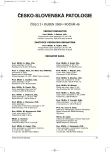Positive Identification Facilitated by Implanted Metallic Plate and Screws
:
Hiroshi Kinoshita *; Hiroyuki Motomura *; Shogo Kasuda **; Minori Nishiguchi *; Kiyoshi Matsui *; Motonori Takahashi *; Harumi Ouchi *; Takako Minami *; Takehiko Yamamura *; Nao Otsu *; Shie Yoshida *; Nobuyuki Adachi *; Takehiko Ohta *; Shigeru Hishida *
:
Department of Legal Medicine, Hyogo College of Medicine, 1-1 Mukogawa-cho, Nishinomiya, Hyogo, 663-8501, Japan
*; Department of Legal Medicine, Nara Medical University, 840 Shijocho, Kashihara, Nara, 634-8521, Japan
**
:
Soud Lék., 54, 2009, No. 2, p. 16
Sources
1. Aoki Y, Nata M, Hashiyada M, Saigusa K, Nakayama Y.: Five cases of positive identification by means of implanted medical equipment. Res Pract Forens Med 1998; 41: 193–198.
2. Bernstein M.: Forensic odontology. In: Eckert WG, editor. Introduction to Forensic Sciences. 2nd edition. Boca Raton: CRC press; 1997. pp. 295–342.
3. Brogdon BG.: Radiological identification of individual remains. In: Brogdon BG, editor. Forensic Radiology. Boca Raton: CRC press; 1998. pp. 149–187.
4. Isaacs TW, Margolius KA, Chester GH.: Postmortem identification by means of a recovered intraocular lens. Am J Forensic Med Pathol 1997; 18: 404–405.
5. Žscan MY, Loth SR.: The scope of forensic anthropology. In: Eckert WG, editor. Introduction to Forensic Sciences. 2nd edition. Boca Raton: CRC press; 1997. pp. 343–369.
6. Knight B.: Forensic Pathology. 2nd edition. London: Arnold; 1996. pp. 95–132.
Labels
Anatomical pathology Forensic medical examiner ToxicologyArticle was published in
Forensic Medicine

2009 Issue 2
Most read in this issue
